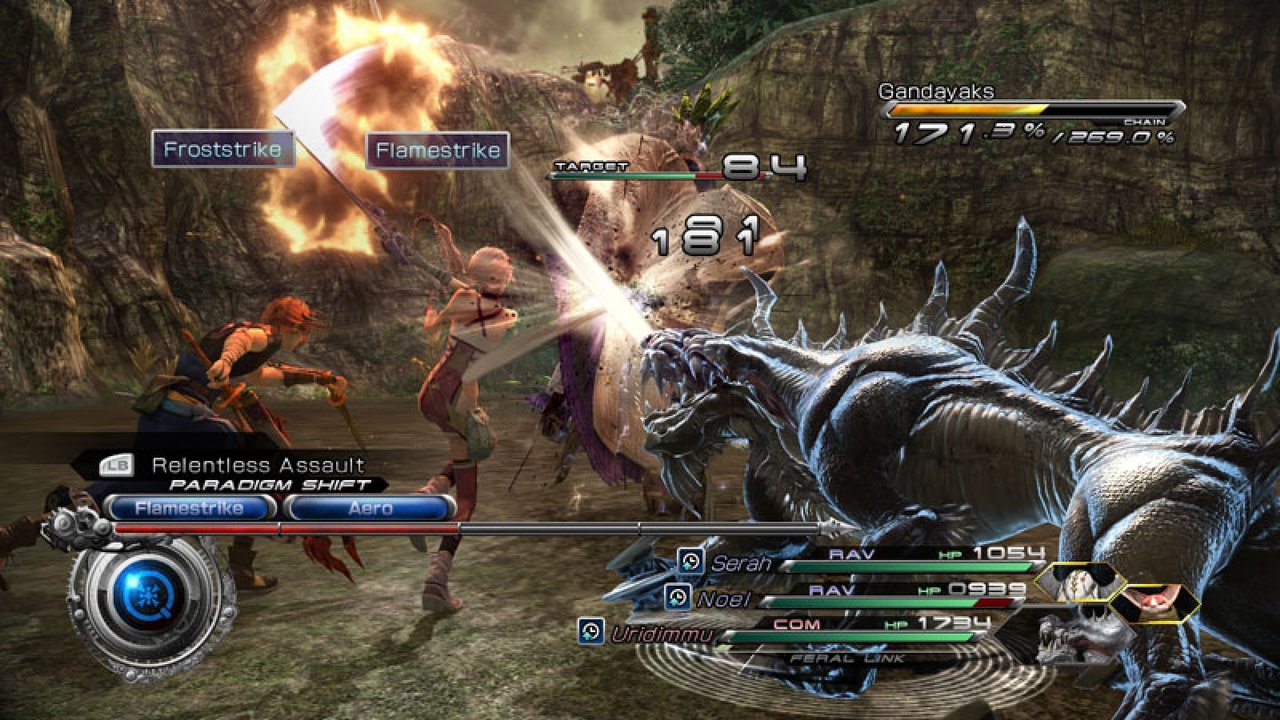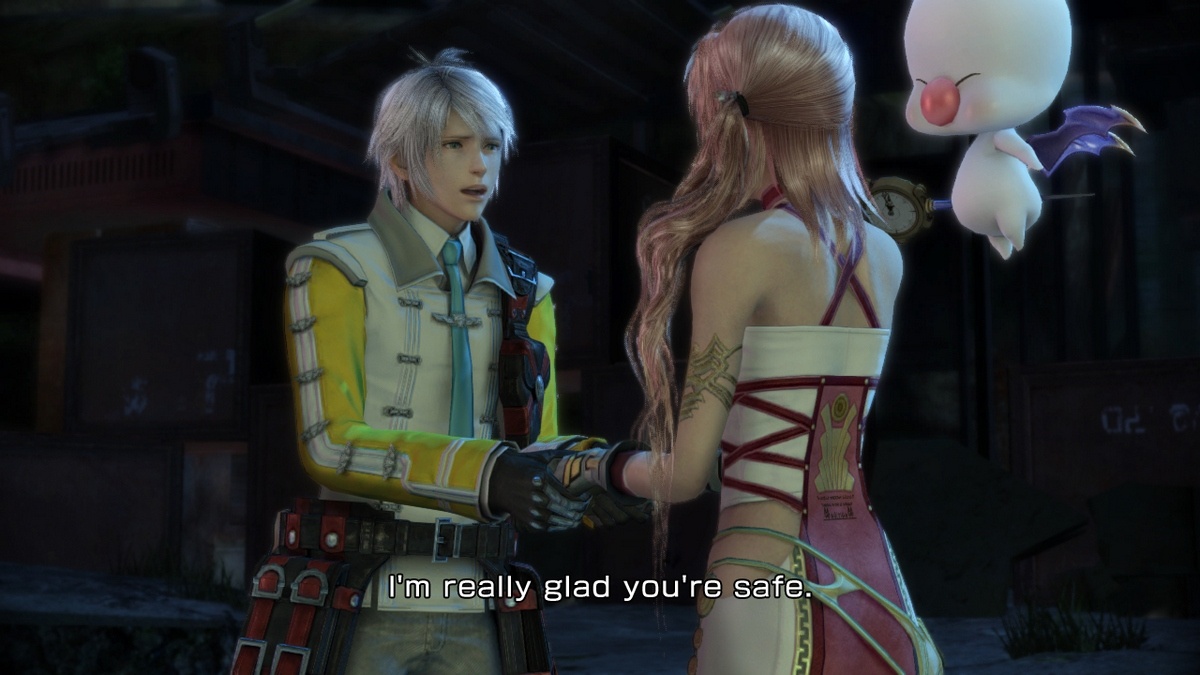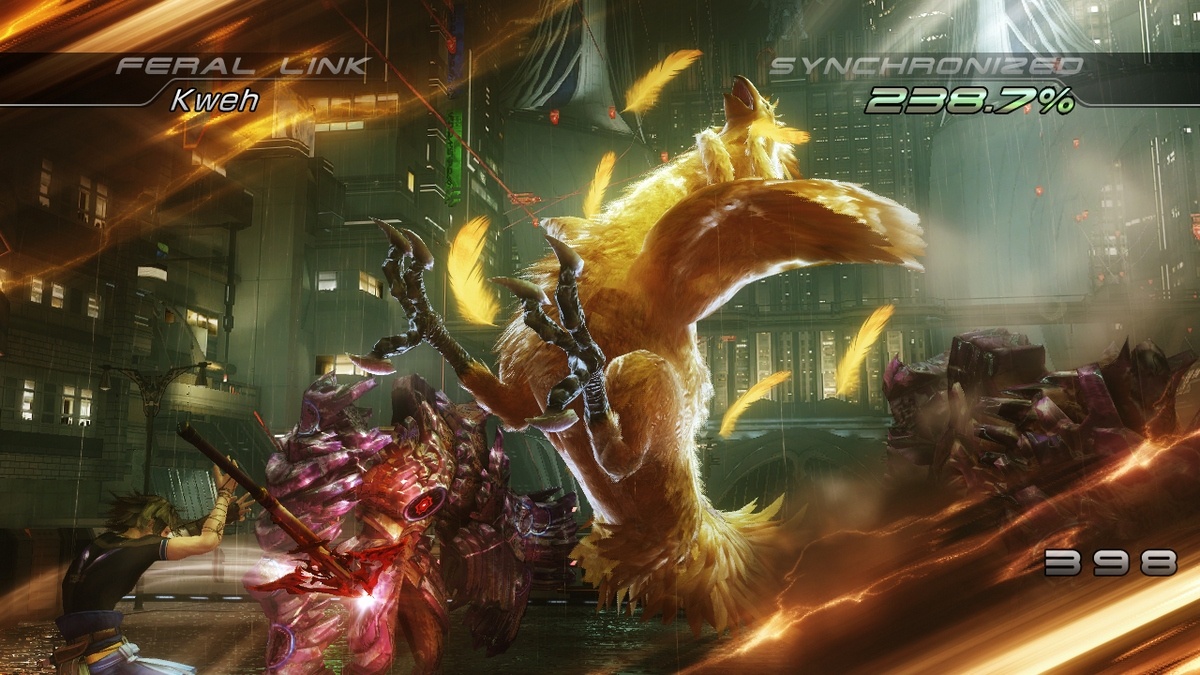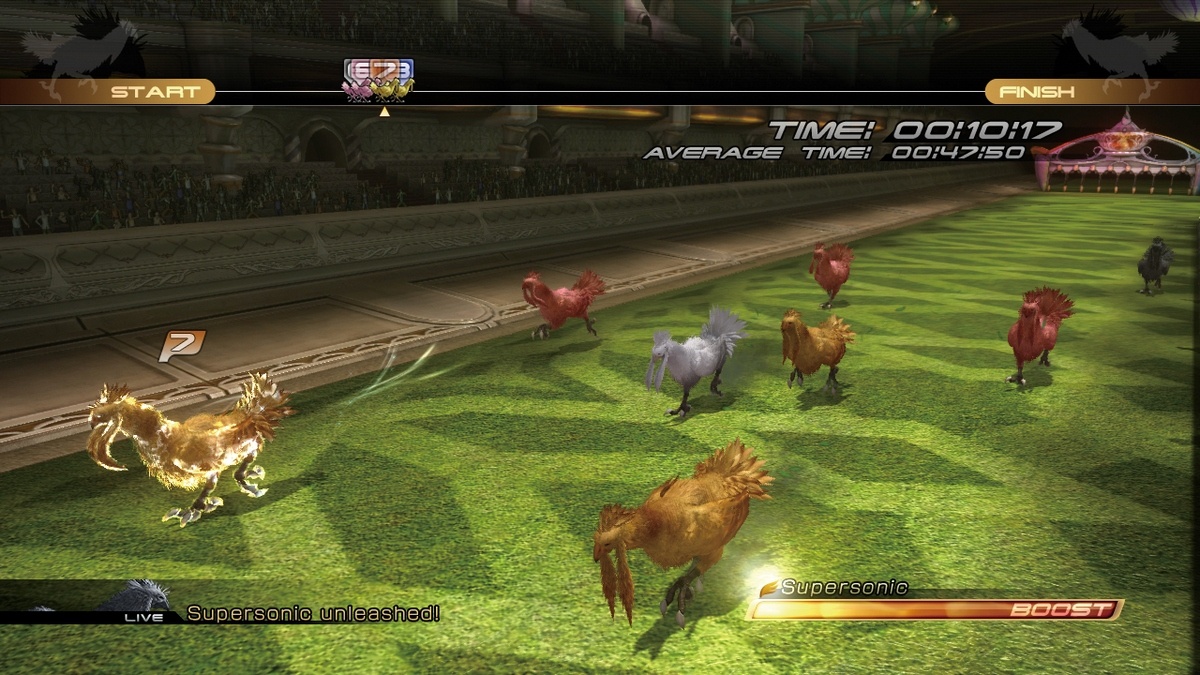Final Fantasy XIII-2 Updated Hands-On: Doing the Time Warp
We reveal more of Serah and Noel's adventures, featuring time travelling, weather-changing contraptions, moogle-tossing, and Chocolina.
If you've suspected that there's more to Final Fantasy XIII-2 than has been revealed so far, then you're correct, as Square Enix looks like it will be shoving the age-old time-travelling plot device into the sequel's design. Specifically, anything you do in a past timeline will affect interconnecting future timelines, be it an obstacle in the way or a story-related plot point. Our protagonists, Noel and Serah, will be jumping back and forth, correcting timelines and eliminating anomalies in the game's universe in order to proceed with the search for Serah's sister, Lightning (protagonist of the first game). Judging from what we have played so far, the developers have listened to the many pleas from fans about the prequel's approach to gameplay.
We checked out a variety of areas from different timelines during our nine-hour playthrough: Valhalla, New Bodhi, the Bresha Ruins, the Sunleth Waterscape in 300AF, and the Archylte Steppe. While the rest of the areas sound familiar to FFXIII fans, Valhalla is a brand-new location, as it's the place where Lightning starts off when fighting the eidolon Chaos Bahamut and the finally revealed villain Caius in active time battle and cinematic action glory. We can't reveal any more than that, except that he has the same sort of mission as Lightning and has special ties with the aforementioned eidolon.

At this part, we checked out New Bodhi, which was recently invaded by oncoming funky-looking bugs, and the Bresha Ruins bit, which we detailed and talked about to death in our past previews. Long story short, we entered the timeline, checked out the branching paths of each corridor of the dungeon, and beat down Atlas with ease after shutting off the nearby generator. When in towns, you can initiate conversations with anyone in tow, be it to open up side quests or just find out what interesting titbits they have to share.
As we took a trip through time, we ended up on the Sunleth Waterscape in 300AF, where we met a bandanna-less Snow. We can't divulge the nature of his appearance, but we can tell you what he was up against: a goliath-sized Flan made up of other Flans appearing from some unknown time-warp portal. Fighting the giant wasn't that hard, but we still had to search for a means to stop it from being big and obstructing our path.
We also checked out the Archylte Steppe, where we had to wander around the giant sandstorm-filled field to help fix a time anomaly. After doing a few quests to fetch and "kill a specific number of monsters" here and there for a nearby hunter's settlement, we were finally given permission to fiddle around with the settlement's weather-changing machine. Not only did this determine the type of encounters we'd be facing, but it also helped reveal the culprit behind the aforementioned anomaly: a giant Feryl sucking in Flans through its mouth. As we set the weather to a clear blue sky, an Adamantoise stood in the way. Killing it at our current level was akin to committing suicide, so we had to change up the weather patterns to make it go away.
After that was settled, we fought the Feryl. While it possessed the Great Roar skill, which buffed itself while debuffing our party members, we took it down with the usual paradigm shift, job-changing mechanics. We let Serah take a backseat in buffing and ranged attack duties, while Noel and our beast of choice, the Flan, took the offensive. Killing off the beast will alter a particular timeline, but, for spoiler's sake, we won't reveal anything specific. We did get to take down a weakened version of the aforementioned giant Flan, though.

Speaking of combat, the game introduces a new concept called Blood Damage. Sometimes you lose a sliver of your maximum health as you keep getting damaged during battle. While a healer can help solve the problem temporarily, you are encouraged to end battles as soon as possible, unless you would rather have your character still fighting a tough enemy with just a quarter of his health left. During our playthrough, we didn't feel hampered by its effects, but we would wager that future boss fights will be challenging with this system in place.
Gamers can also toss the moogle to grab far-to-reach items. This handy feature was introduced during the Sunleth Waterscape stage, while our party had to ride a behemoth through an inaccessible path. The catch is that since the moogle is in the midst of procuring items, you are left vulnerable against enemy ambushes, because there's no access to the moogle clock.
The fancy-looking Crystarium leveling-up system is also back, albeit in a less convoluted manner since there's only one Crystarium tree for all roles. No need to hold down the button to fill up stats; paradigm class buffing is now done with a simple press instead. Once you buff up a paradigm class to a level, you get a choice of bonuses: enhance the number of active time battle bars by one, level up any one of the paradigm shift roles Serah and Noel has, or allocate more accessory points for piling up characters with more gear.
Unlike in past games, you can't just equip up to four accessories at a time; you can equip only as many accessories as you have accessory points. Each character starts off with 50 accessory points; equipping something as simple as a life-boosting bracer will cost 30 points, therefore leaving 20 points for other items.

Gamers may balk at the thought of not equipping three accessories from the get-go, yet at the same time the challenge level is tweaked especially if certain pieces of equipment have the potential to break the game with the right monster to complement the party. You can also equip accessories onto your monsters, but these serve more as cosmetic add-ons than anything else.
Heading back to its semi-nonlinear roots, Square Enix plans to add in more things to do for players. In an area called Xanadu, you can take part in Chocobo races, bet on Chocobos when they race, and gamble your savings away using slot machines shaped like aero bikes. The place accepts only "casino coin" currency, which you have to purchase. We didn't get the chance to play this bit, but we're already getting nostalgic due to the old days of Chocobo inbreeding and gold saucer shenanigans in Final Fantasy VII.
Square Enix was also mum about recurring characters from the prequel, but we can reveal that Serah and Noel will meet an older version of Hope, who is now the leader of the Academy, a group of scholars who conduct research on the world's history and are finding new energy sources due to the absence of the gameworld's fal'Cie. According to producer Yoshinori Kitase, he will be featured prominently in the game's plot, and his role connects to the game's overall theme of regeneration and rebirth.
But perhaps the strangest addition to the universe is the new interdimensional shopkeeper Chocolina. Dressed skimpily in a red two-piece that's embroidered with characteristics of the famous bird, this young lady will offer to sell her weapons as well as modify your current accessories using random parts you've collected either through exploration or during battle.

We should also point out that failing cinematic actions will result in your party's death, which restarts the entire battle. Any progress on long-term fights you initiate will go to waste if you don't react to the in-game QTEs, though to be fair, the prompts aren't instantaneous, and you don't fail the segment if you press the wrong button. It is something worth bringing up, and so far there isn't any word on whether Square Enix will tweak this aspect so that gamers can start right at the cinematic action bits if they did not succeed.
Fans who were divided about Final Fantasy XIII's "corridor RPG" approach can rest assured that this sequel contains that semi-illusion of nonlinearity and choice present in past Final Fantasy titles alongside an assortment of activities to pass the time (so to speak). It also helps that the action and a majority of the game's mechanics are out in full force right after the fourth hour, give or take. The story requires extensive past knowledge of FF XIII, but there's a narrative recap of the prequel on the title screen if you are inclined to check it out.
Gamers will feel right at home with this sequel, which is set for release in Japan on December 15 and in North America on January 31 next year.
Got a news tip or want to contact us directly? Email news@gamespot.com
Join the conversation